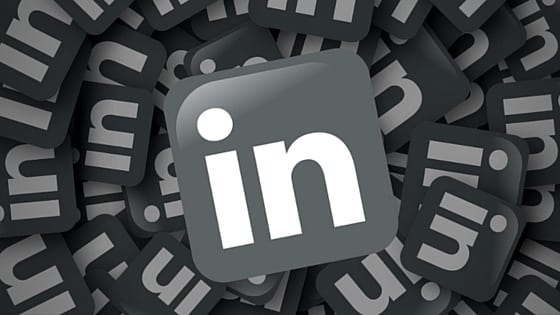What’s really significant about LinkedIn isn’t its size but its focus. Unlike platforms such as Facebook and Instagram, LinkedIn is specifically aimed at businesses. Users don’t have to sift through hundreds of pet photos, celebrity memes, and other distractions. While some non-business-related content slips in, the emphasis is heavily on subjects of interest to business leaders and investors as well as people seeking jobs. The following statistics come directly from LinkedIn’s own Marketing Solutions Blog.

- LinkedIn is the number one social media site for Fortune 500 companies.
- LinkedIn is, by far, better than any other social media site for generating leads. 80% of B2B leads from social media come from LinkedIn.
- Users are in positions of influence. More than 60 million LinkedIn users are senior-level influencers.
- 81% of B2B marketers use LinkedIn for product launches. Perfect for start-ups.
How you should leverage LinkedIn
There are quite a few components to LinkedIn. Here are some effective ways to engage with your audience on this site.
- Profile. Your LinkedIn profile is your central hub for presenting yourself to the world.
- Long-form content. You can publish articles that let you build your credibility and possibly get ranked on Google. Don’t listen to the hype that people don’t red long-form content because that’s simply not true. In fact, long-form content performs much better at obtaining leads and engagement and especially on LinkedIn where people are much more open to improving their education.
- Groups. Joining or starting specific groups where your target audience resides lets you target your communications even further.
- Paid ads. There are several options for advertising on LinkedIn. My personal favourite is InMail Ads as they have on average a 50% open rate which is quite significant when you compare it to Email’s 20% open rate.
- Direct messaging. Your ability to contact other members is the best way to grow your customer base. But don’t go selling to them upon first contact – you need to add value first.
- Drive traffic to your blog, website, and other channels whereby you hopefully have lead magnets in place that help you capture contact details and further nurture your leads.
Now let’s look at these and other LinkedIn strategies in more detail.
How to be a Power Profiler
LinkedIn reports that 50% of customers avoid people with incomplete profiles. In other words, even before there’s any engagement, people are judging you based on your profile. When people see a profile that lacks depth and doesn’t reveal much, they assume you haven’t put much thought into it or, worse, that you don’t have very impressive credentials.
Here are some of the most important considerations for optimising your LinkedIn profile.
- Use a quality head shot. Your photo is one of the first things visitors to your profile will notice. Profiles with photos receive 21 times more profile views, which should be enough reason to visit a photographer’s studio if you don’t already have a suitable photo to post. Your photo should show you in attire that’s appropriate for your industry and target audience.
- Create a custom URL. LinkedIn gives you the option to edit your default URL and change it to something more personalised. You can use your own name or your business name.
- Optimise your headline. Just as in emails and articles, profile headings are crucial for attracting attention and giving viewers an idea of what you have to offer. Business related keywords inserted into your headline also makes you easier to find in searches by your target audience. You have 120 characters in your headline so use them wisely.
- Make your summary stand out. You have plenty of room to describe yourself in the summary. You can make it as long as 2,000 characters, in fact. While you should definitely take advantage of this space, don’t just fill it up with jargon and buzzwords. Give your audience genuine insight into your product offering and why you’re so passionate about it as well as how it aims to change the world.
- Upload media. Video and Slides preferably. There’s a section of your profile where you can upload media such as photos, videos, and audio files. Take advantage of this and add some content that showcases some of your best content and accomplishments. This is also where your DEMO video of your software can go so that bottom-of-funnel users can access it easily. Make sure to include a call-to-action in your video.
- Solicit recommendations and endorsements. LinkedIn gives you a way to display social proof right on your profile. Ask colleagues, customers, and anyone familiar with your work for testimonials. They can also endorse you for specific skills. Make it a habit to request testimonials and endorsements whenever you complete a project. You can get endorsed for skills and hence will once again appear for more searches when customers and talented potential employees are looking for you.
Personal Branding vs Company Branding
When creating your profile and submitting content to LinkedIn you have to decide whether to emphasise your personal brand or your business. For most small and midsize businesses, it’s more beneficial to focus on your personal brand. What you’re really doing on LinkedIn is building relationships. People want to engage with a person, not a company. That’s why you should always have a photo of yourself as your profile photo rather than a business logo.
Unless you already have a high profile, it can be quite challenging to build a company brand. You’re competing with thousands of companies with gigantic budgets and that may get substantial media coverage. Your business name and logo can easily get overlooked. As an individual, however, you have a chance to make an impression and stand out. Your experience, qualifications, and personality are uniquely yours. Be sure that this comes across in all your communications.
In another sense, personal and company branding are not mutually exclusive. When you build your own brand, you’re also contributing to your company’s image. Depending on the context, you might introduce yourself by saying, “It’s John from XYZ Solutions…” It’s usually easier and more natural to make yourself come first. This also lets you connect your LinkedIn efforts with everything else you put out, including your website, other social media content, blog posts, videos, podcasts, or anything else you do.
Sales Navigator Hacks and Tips
Sales Navigator is a powerful LinkedIn tool for generating targeted leads. This is one of LinkedIn’s premium services so it’s not available with a free account. However, if you make use of it, you’ll probably find that it pays for itself fairly quickly. You’ll have the ability to send 20 InMail messages per month (or more, depending on which plan you choose).
Many of the other tips covered in this chapter, such as optimising your profile and sharing great content, will help you get better results with Sales Navigator. When you send a message to a prospect, he or she is likely to check out your profile and see what you’ve shared recently. Here are some other hacks to help you get more than your money’s worth from Sales Navigator.
Get the Most Targeted Leads
One of the best features of Sales Navigator is that it gives you access to advanced search filters. You can really pinpoint your searches based on geography, job title, company type & size, industry, and other criteria. Experiment with this and find out which settings provide you with the most promising leads.
There are a few other features that help you identify the most targeted leads. Sales Spotlight lets you know, at a glance, which companies are most likely to respond to you based on industry, whether they follow you on LinkedIn, and other considerations. There’s also a “view similar” button that lets you pull up leads similar to ones you’ve identified as highly targeted. Another useful trick is to apply the TeamLink filter, which brings up warmer leads, those with whom you have a second-degree connection. With these leads, you can refer to your shared first-degree connections. You can also ask your direct connections to provide an introduction.
Send Compelling InMail Messages
InMail is LinkedIn’s internal messaging system. While the format is similar to sending an email, InMail has certain advantages. The majority of users (i.e. those with free accounts) can only send InMail to members with whom they’re already connected. Not only do people get far less InMail than email but they’re more likely to consider the latter as coming from someone at least somewhat familiar and trustworthy. At the same time, it’s up to you to send messages that spark the reader’s interest and that don’t come across as intrusive, irrelevant, or spammy.
Don’t attempt to automate the process by sending the exact same message to every prospect. Do enough research on each lead that you can mention something specific about them. For larger companies, you might search for recent news you can refer to. You might also comment on an article or link the lead has recently shared on LinkedIn.
Advertise With LinkedIn
LinkedIn ads can help you get faster results with your marketing and lead generation efforts. There are a few types of ads that can help you build your brand and warm up your leads.
Sponsored Content
Sharing content on LinkedIn is a good way to demonstrate your expertise and get more traffic to your profile. If your article is featured on LinkedIn Pulse, you have a good chance to get ranked on Google as well.
Why is it important to rank on Google?
A targeted campaign that I ran on Google specifically for my client Navman Wireless, achieved a 975% Increase in Leads within a 4-month period. This helped them scale significantly in the next 2 years and get out of the revenue plateau that many companies reach in the first 10 years in business.
Sponsored InMail
We already discussed the advantages of sending InMail as part of your Sales Navigator benefits. As an alternative (or in addition), you can send sponsored InMails. This is a good option if you don’t want to upgrade to a premium account but would prefer a more pay-as-you-go approach with ads. The key to success with sponsored InMail is to target the right prospects and include a relevant call-to-action. LinkedIn’s advertising platform offers many targeting options.
No matter what type of advertising you do, it’s essential to track your results so you can improve with each campaign. You also need to set specific goals. For example, you might sponsor some of your best content to build your personal brand while sending sponsored InMail to acquire immediate leads.
Companies Doing it Right
Let’s look at some examples of personal and company accounts that are getting amazing results with LinkedIn.
Lenovo
We used LinkedIn Sales Navigator in combination with a social selling campaign that I ran for them that resulted in revenue of US$66million in just 12 months. Not only did we promote content via the company page, but we also shared thought-leadership content by all the sales-reps themselves so help improve their profiles and personal brands.
Don’t underestimate the power of content and adding value for your target audience. Promoting it via LinkedIn ensures you get it into the right hands too so the effort is not wasted.
Brian Hartzer
Brian Hartzer, CEO of Westpac Group, made the top of the list for Business Insider’s Top LinkedIn Profiles in Australia . One feature of Hartzer’s page that immediately stands out is that he strikes a good balance between promoting his company and his personal brand. He writes many articles himself and also shares relevant stories. He shares news items and articles about topical issues such as the importance of small businesses, the emergence of female leaders in banking, and the drought affecting NSW.
Hays
Hays company page was awarded LinkedIn’s Best Company page (an award bestowed by LinkedIn itself) two years in a row. This global recruiting company excels in several areas with its LinkedIn marketing. They share lots of engaging content. The page provides people with truly useful information. Some recent articles cover topics such as improving your listening skills, why coding is a valuable skill to learn, and addressing workplace loneliness. They also share content in a variety of formats including text, quality images, videos, and podcasts. Many of their ads allow prospects to download valuable reports such as a guide to creating a winning CV and salary guides targeted to specific regions.





















